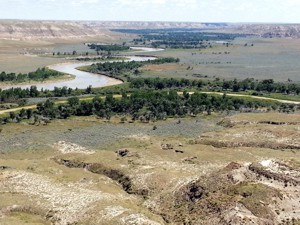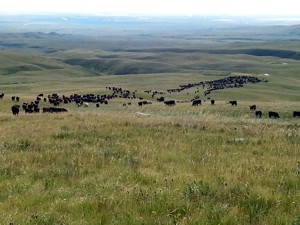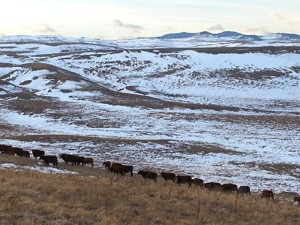About Us:
About us
Alberta Grazing Leaseholders Association (AGLA) advocates for the rights of all grazing leaseholders in Alberta. We strive to be the voice of reason in matters of land use, property rights and surface rights. Since the inception of AGLA in 1998, we have actively represented the interests of leaseholders provincially, nationally and locally.
Mission
To protect Alberta's grazing leaseholders from erosion of rights and property and to preserve the assets and income of grazing leasehold owners.
History of the AGLA
The origins of the Alberta Grazing Leaseholder Association go back to September 24, 1997 when a Government of Alberta news release announced the details of the public consultation process of the Agricultural Lease Review Committee. The committee held public meetings between October 20 and November 25, 1997. People from all over the province made presentations. Landowners and leaseholders made very strong presentations focusing on property rights and the economic importance of lease land to their agricultural operations. The Agricultural Lease Review Committee took that public meeting information and was to develop an Interim Report to be delivered in 1998. The landowner and leaseholder of Alberta felt their voices had been heard and that the Interim Report would be in favour of leaseholder rights and the economic stability of farms and ranches of Alberta.
The "Interim Report of the Agricultural Lease Review Committee" was released in May 1998. Leaseholder reaction to the report was immediate and very negative. They felt the review committee had ignored the landowner/leaseholder perspective and the Government of Alberta was directly attacking property rights of leaseholders.
By September 1998 landowners and leaseholders were unsatisfied and extremely concerned with the proposed changes to their rights which the review committee recommended. September 10, 1998 was the first of a series of meetings. The first meeting was in High River with over 300 landowner/leaseholders attending. The opposition to the Interim Report was unanimous. An action committee was formed to establish a province-wide leaseholder organization with regional representation. After a week or so of political exchange between the committee and government MLA's, a second meeting was held in Brooks. Approximately 30 concerned leaseholders from across southern and central Alberta were in attendance. After a detailed discussion on the merits of a provincial association of leaseholders, a motion was made to form a legal society called the Alberta Grazing Leaseholders Association. A board of directors made up of seven Alberta ranchers was elected and the official society paperwork was signed in the presence of legal counsel.
On September 24, 1998, exactly one year after the Government of Alberta news release announcing the Agricultural Lease Review Committee consultation process, the Alberta Grazing Leaseholders Association became a reality.
About grazing leases in Alberta
The first grazing leases were instituted in 1881. Today there are roughly 5,700 grazing leases covering an estimated 5.2 million acres (2.1 million hectares). Alberta's land mass is estimated at 150,000,000 acres, not including water putting grazing lease acreage at less than 5% of the land base. The beef cattle industry generates roughly $3 billion in farm cash receipts. The success of this valuable industry relies on an efficient and productive cow herd with access to an extensive feed supply. Approximately 20% of this feed comes from the use of Crown grazing leases, making these lands an integral foundation for one of Alberta's most important industries. These Crown lands have a designated priority use for agriculture and most are best suited to cattle grazing. The average lease in Alberta is just over a section and supports approximately 50 cows.
The lion's share of grazing leases in Alberta are native landscapes. These landscapes have survived many pressures including settlement, agricultural expansion, urban development and industry. A big reason for that survival is the stewardship of the leaseholder. Over generations of management, leaseholders have built a vast amount of knowledge on how the ecosystems work. They understand the soils, the flora and the fauna and the relationships of these to each other to a better degree than anyone else because they have been there day after day, year after year, decade after decade. The experiential knowledge of the leaseholders is a tremendous asset to the province in the management of this incredible resource.
When it comes to public land, it is understood there will be multiple users. Oil and gas development, logging and a suite of recreational uses including everything from birding to off-highway vehicle use are important activities that occur on public lands. Grazing leaseholders provide stewardship value in managing industry and educating recreational users. The grazing lease structure encourages the cooperation of industry, recreational users and leaseholders to ensure disturbance is minimal and that reclamation efforts are effective. A grazing leaseholder is to a lease the same as a park warden is to a national park. They are local stewards put in place to look after the land. In a broad sense, the lessee helps protect all things on the land beyond the grass their cows graze, including the aesthetic, wildlife and recreational values.



